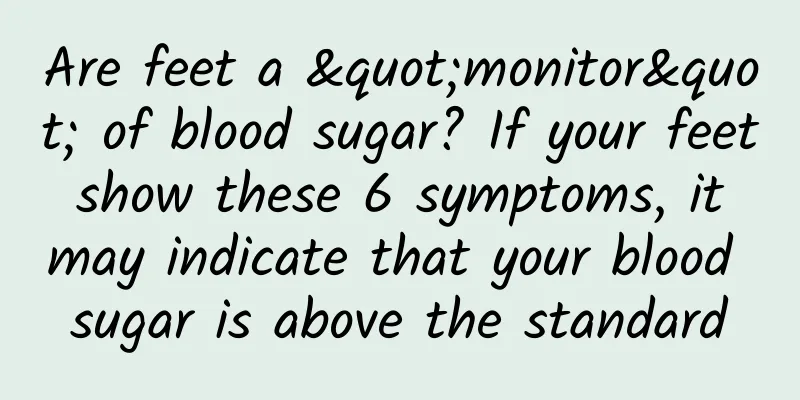How to treat onychomycosis? Who is most likely to get onychomycosis?

|
Nowadays, more and more people are suffering from onychomycosis. Experts point out that this is closely related to various bad living habits. In addition, if you diet for a long time, it will also induce onychomycosis due to malnutrition. Therefore, in order to better prevent onychomycosis, you must pay attention to developing good living habits and eating habits in your daily life. At the same time, in your daily life, we should also know who is most "favored" by onychomycosis? The dangers of onychomycosis 1. Affect the appearance As the saying goes, "Hands are a person's second face". The beauty of hands directly affects a person's temperament. The beauty of hands is largely in the nails. Onychomycosis on the hands does affect the appearance. Patients feel ashamed and embarrassed when shaking hands with others. 2. Restrict work The consequences of nail damage are not limited to the ornamental itself, but will affect or even endanger the patient's work, especially some professions that are in the spotlight and have strict hygiene requirements, such as doctors and nurses, catering industry, silk weavers, public relations and other jobs. 3. Impact on daily life Nails are essential for threading a needle, writing, cooking, typing, knitting, playing the instrument, and other tasks that humans perform. Once you have onychomycosis, these tasks will be disrupted. Nails grow at the end of the hand to protect it, and once you have onychomycosis, your hand will be easily injured by collision. 4. Produce abnormal psychological disorders Patients with onychomycosis, especially when long-term treatment is ineffective, often have an inescapable sense of embarrassment and frustration. Especially when work, marriage, and social life fail due to onychomycosis, the psychological blow to patients is even greater, and they often develop a sense of inferiority. 5. Many complications Onychomycosis can cause pain and discomfort, and can easily lead to complications such as paronychia, onychomycosis, and pyoderma of the fingers. In severe cases, it can cause systemic symptoms of deep tissue and organ infection such as erysipelas or cellulitis, which can even endanger life. Female compatriots with onychomycosis can spread to the genitals, causing difficult-to-cure gynecological diseases such as candidal vaginitis and candida albicans vaginitis. 6. Become a source of infection for humans Patients with onychomycosis can easily become a source of infection for fungal diseases. As patients scratch, the fungus can spread to other parts of the body, causing new tinea. In severe cases, it can be transmitted to family and friends. Friends and relatives are often infected by changing shoes, touching hands and feet, and sharing daily necessities. Once infected, it is easy to develop serious skin diseases such as tinea manuum, tinea corporis, erysipelas, etc. Who is most likely to get onychomycosis? 1. Weak people Regardless of whether it is due to natural weakness or acquired factors that lead to decreased immunity, these people should pay special attention to preventing onychomycosis in their daily lives, because it "favors" people with weak constitutions the most. For example, the immune function of middle-aged and elderly people and diabetic patients is usually relatively low, so it is easy for various bacteria and germs to invade and infect. In particular, people with trauma to the nails, sweat easily, and wear tight shoes and socks for a long time are more susceptible to fungal infections. Among this group of people, pregnant women and patients with diabetes have the highest chance of contracting onychomycosis. Therefore, these patients must take effective preventive and treatment measures in their daily lives. 2. Do manicures regularly In recent years, nail art has become the hottest industry, which has a lot to do with women's natural love of beauty. It can be said that women want to be beautiful from head to toe, and of course nails cannot be spared, which leads to many women doing nail art frequently. However, experts remind women who often do nail art for a long time to be especially careful, beware of onychomycosis. This is because the nails are polished too thin during the manicure and the manicure tools are not thoroughly disinfected, which can cause you to have onychomycosis. Normally, manicures include cutting, grinding, filing, polishing, and applying nail polish, and no matter which procedure is used, it will cause great damage to the nails. Once the skin around the nails is damaged, it is very likely to cause fungal and mold infections, thus inducing onychomycosis. 3. High heels Onychomycosis not only occurs on fingernails, but also on toenails. Therefore, you should take good care of your toenails in your daily life. Experts point out that wearing high heels for a long time is the main cause of onychomycosis. In a survey, it was found that wearing high heels is positively correlated with the incidence of onychomycosis, which means that the longer you wear high heels, the higher the chance of developing onychomycosis. This is because wearing high heels or small shoes increases the force on the forefoot, and the five fingers squeeze each other, which can easily cause poor local blood circulation, nail deformation and nail peeling. In addition, the environment inside high heels becomes humid and stuffy, so it is easy to breed bacteria and induce infection. 4. Chef Research has found that people who work as chefs, laundry workers, and other types of workers for a long time are more likely to suffer from onychomycosis, which is related to long-term immersion of nails. Because it is common to immerse hands in various solutions, it is likely to induce paronychia, which will then develop to the nail plate and cause disease. Especially for dishwashers and housewives, because their hands are often immersed in water, it is easy to get yeast infection and induce onychomycosis. These are the main causes of onychomycosis, so we must take corresponding preventive measures in our daily lives to protect the health of our nails. At the same time, women who love beauty should also pay attention to avoid long-term and frequent manicures and the application of nail polish. Treatment of onychomycosis Onychomycosis is the most stubborn and difficult to treat type of dermatophyte disease. It can be treated with oral or topical medications, or surgical nail removal. Fingernails and toenails grow at different rates. It takes 100 days for a fingernail to completely replace a new nail, while it takes about 300 days for a toenail, so patience is required to treat onychomycosis. 1. Surgical nail removal Suitable for single nails, remove the affected nail under local anesthesia. This method causes large wounds, bleeding, and easy infection. Generally, it will feel painful after the operation, and it is easy to re-infect and relapse. It is now rarely used in clinical practice. Patients with heart disease, hypertension, diabetes, etc. are not suitable for surgical treatment. 2. Oral medication Suitable for multiple nails. For example, take 250 mg of terbinafine tablets orally every day for 6 to 12 weeks; take 400 mg of itraconazole every day for 7 days and rest for 21 days as a course of treatment, and continue for 3 to 6 courses; take 150 mg of fluconazole 1 to 2 times a week for more than 4 months. It can cure more than 80% of onychomycosis and onychomycosis. However, because this type of drug must reach the nail plate where the fungus is parasitic to exert its antibacterial effect, the dosage is large and the medication time is long, and the adverse reactions of the drug should be monitored regularly. 3. Topical therapy Depending on the different drugs, the main methods include local application of drugs and sealing and cutting. (1) Use a nail file (non-professionals should avoid using a razor blade to avoid bleeding and infection) to thin out irregular and damaged nails. The best time to do this is once every two days. (2) Apply 30% glacial acetic acid or soak the diseased nail in 10% glacial acetic acid once a day for more than 3 to 6 months. The effect will be better if the diseased nail is thinned before applying the medicine. Before applying the medicine, be sure to protect the skin around the nail with a mild ointment; (3) Antifungal topical medications such as terbinafine tincture, amorolfine nail lotion, and ciclopirox nail lotion can be applied topically. In short, the treatment of onychomycosis requires perseverance. At the same time, you should also actively treat ringworms and chronic systemic diseases in other parts of the body, improve your own resistance, and pay equal attention to prevention and treatment, so that it is possible to completely cure onychomycosis. |
<<: What is the reason for yellow tongue coating? How to treat yellow tongue coating
>>: How to treat dental neuralgia? How to quickly relieve dental neuralgia
Recommend
This thing is often seen on the dining table. Be careful of its "explosive" temper
Audit expert: Zhou Hongzhi Senior Experimentalist...
Elevated alpha-fetoprotein = liver cancer? What is the connection between the two?
AFP Alpha-fetoprotein (AFP) is the most widely us...
What is the reason why women's period is late?
Menstruation is a very important physical reactio...
How to treat ulcers on the inner labia majora
Many people work day and night to make a living. ...
Why does it hurt to touch my nipples?
If your nipples feel painful when they are touche...
Early detection of asymptomatic STDs in women
A prominent feature of sexually transmitted disea...
Is it possible to have a caesarean section 10 days in advance?
Whether to give birth on time at full term or by ...
What is the time for the fetus to enter the pelvis? What changes will occur when the fetus enters the pelvis?
We all know that after a certain stage of pregnan...
Why is the vaginal opening a little white?
A healthy body is very important for everyone. Ho...
What are the dangers of abortion?
Nowadays, many young people do not want to have c...
Will cleaning your ears cause tinnitus during the confinement period?
The ear is our auditory organ and contains many n...
Women with inflammation cannot have oral sex
During the sexual life, every couple has differen...
If the vagina turns black during pregnancy, will I have a boy?
The parts of a woman's body that undergo the ...
Can breast shrinkage be restored?
Women want their breasts to be bigger, so they us...









